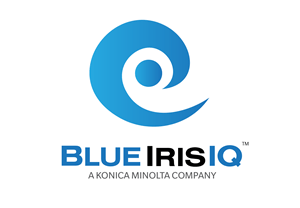This disruptive technology possesses powers that make for a less chaotic next phase of our data-laden digital age.
As organizations continue to chew and choke on the challenges of managing extensive data volumes, artificial intelligence (AI) is becoming pivotal in shaping the future of document management systems (DMS).
Accessibility to text-synthesis machines is still new. Chatbots and generative AI burst into mainstream consciousness 18 months ago when ChatGPT took the internet world by storm with its ability to answer questions and generate content in a human-like way. Quickly following to market in early ’23 was Google (Bard, now Gemini 1.5) and Microsoft (Copilot, the consumer’s “everyday AI companion,” per last month’s Super Bowl commercial for the MS app).
Financially speaking, 2024 is predicted to be a telling year for these and other big-data powerhouses, including Apple Inc. and Meta Platforms, as well as AI chipmakers Advanced Micro Devices, Inc. (AMD) and NVIDIA Corp. All six publicly held companies are demonstrating optimism by investing heavy R&D dollars into advancing gen-AI technology.
AI, while admittedly disruptive, is not truly smart and is far from emergent. IBM debuted its Watson natural-language system 14 years ago. But “thinking machines” and large language models (LLMs) have been in use since the 1950s, according to experts at Harvard University. LLMs are deep-learning models pre-trained on vast amounts of data. Alex Wong, senior product marketing manager at Laserfiche, points out that his firm, which specializes in enterprise content management (ECM), has been involved with predictive AI for quite some time. “Smart invoicing, OCR, and voice-to-text transcriptions are nothing new,” he said.
Gen AI Applications
Generative AI applications, however, are newer. This type of artificial intelligence is capable of generating text, images, or other data using generative models, often in response to prompts. Laserfiche dipped a toe into these waters during Q4 2023. Built into the firm’s cloud-computing platform, the RegEx Builder tool uses gen AI to help users natively build and update regular expressions with much less coding.
Rather than build solutions from scratch, the new Laserfiche product can be used to accelerate the process of turning ideas into usable pieces of code that, in turn, can be integrated into forms. The process substantially shortens the time from idea to delivery. “Users just type in regular expressions, and the Builder will proofread,” explained Wong. “It can validate form fields for categories like phone numbers, ZIP codes, or U.K. postal codes.”
Next-Gen Document Processing
“As classic document management systems morph into intelligent document processing (IDP) solutions, we are seeing the addition of several advanced technologies, not the least of which is AI,” said Anne Valaitis, a principal analyst for Keypoint Intelligence’s AI Advisory Service. “Artificial intelligence is especially useful in the capture modules many DMS products offer to help knowledge workers get documents into the system.”
She explained, “With AI, documents can be classified by the system automatically—based on content, contextual clues, and other learned information—instead of based on reading predetermined metadata fields or OCR parsing alone. Once data and documents are in the platform, AI can assist in any document conversion or processing that is desired, as well as in automating complex workflows.”
With AI’s ability to convert unprocessed data from documents into dynamic, visual representations, the technology can elevate data comprehension and analysis, according to Dubai-based ITP Media Group/Edge. Through the automation of labor-intensive tasks, increased precision, and improved efficiency, AI-driven DMS offers businesses several advantages, including heightened productivity, reduced costs, and enhanced competitiveness.
Machine Learning
By enabling AI to advance IT, companies will see great growth and a wider implementation of their offerings. The aforementioned OCR technology is used in PFU scanners from Ricoh/Fujitsu. A few years ago, OCR fundamentally transformed how businesses handle documents. Combining it with advanced machine-learning algorithms allows data-capture software to interpret text and visual elements within scanned documents. This automation streamlines document handling, reducing the need for manual data entry and enhancing accuracy.
“The benefits of these innovations are tangible,” ITP noted, “with organizations experiencing increased efficiency and decreased human errors.”
Going forward, “AI will power and influence everything we do at Laserfische,” revealed Wong, who said to watch for a new document-summarization solution before the first half of 2024 is in the books. “Using metadata, users will be able to right click and quickly obtain summations for thousands of document files housed in Laserfiche’s repository.”
Following a measured and methodical approach, Laserfiche’s technological road map is driven by the two guiding principles of productivity and security. “The value proposition of our process automation is all about removing menial, labor-intensive tasks and making the workday smoother for people,” explained Wong. When it comes to AI, though, “We need to build responsibly. People are concerned about where their data is going—and rightly so.”
To that end, Laserfiche has forged relationships with best-in-class partners, such as Amazon Web Services (AWS) and OpenAI (ChatGPT’s developer), which have the proper licenses to ensure that third-party data remains as secure as possible. “We strive to bring peace of mind to our customers,” said Wong, adding that the ability to opt out always is a choice for those who are leery. In addition, each Laserfiche employee is now required to agree to use AI technology responsibly, per a company-wide policy instituted last August.
Machine learning, an AI subset, makes knowledge-based decisions based on previous behavior and the new data it reads. An autoindexing solution extracts information like sender, recipient, amount, creation date, and other standard items from a document. “It recognizes these data fields correctly whether they appear in the same place on a document type or not,” explained Joan Honig, content marketing manager at DocuWare. “For example, although each vendor structures their invoices differently, it recognizes where the pertinent information is on each one.”
The software also uses “few exemplar learning,” which trains it with very few (usually one to three) examples. As a result, its automated capabilities become highly accurate very quickly. “This is a big advantage [because] the user does not need much sample data to teach the software to become precise, and almost no configuration is required,” said Honig. (See sidebar.)
The AI Opportunity
DocuWare is expected to discuss its AI plans for the second half of 2024 in mid-May at the DocuWorld Conference in Houston. “Intelligent applications provide far-reaching insights and deliver findings that business users can leverage for analytics and reporting,” noted Anna Frank, one of the software developer’s marketing content managers. “As a result, standalone business intelligence tools will become outdated. Through predictions or recommendations, AI also offers the opportunity to tailor applications more closely to their users and promote data-driven decision-making.”
Datafication, too, will play a role in predicting trends and customer behavior, optimizing work processes, influencing product development, and strengthening data protection, according to Frank, who sees vast potential. “Datafication is a process in which technologies such as artificial intelligence, robotics, and machine learning are used to transform various facets of business and everyday life into meaningful data,” she added. “It involves the collection, analysis, and use of data from multiple sources, including sensors, devices, and online interactions.”
AI stands poised to revolutionize DMS in profound ways, and embracing these advancements in document management can keep businesses at the forefront of innovation in the so-called Digital Age. “Over the next two to three years, AI will play a significant role in automating content analysis and sentiment processing through workflows,” contends Christophe Laurence, EMEA business development director at PFU Ricoh. He cites two areas to watch:
- Natural Language Processing (NLP) is one key advancement. NLP algorithms will enable businesses to categorize documents more efficiently, facilitating enhanced organizational capabilities. This development is crucial for further analysis and data-driven decision-making.
- Sentiment Analysis, another promising area, allows AI to determine whether textual content expresses a positive, negative, or neutral sentiment. This capability is particularly valuable for understanding customer feedback, reviews, and social media mentions, allowing businesses to gauge public perception of their products or services. These AI-driven insights will seamlessly integrate into existing business workflows, improving efficiency and responsiveness. For example, when AI detects negative sentiments in customer emails, the workflow can automatically prioritize and route them to the customer service team for immediate attention.
Benefits extend to content analysis and visualization as well. “AI will offer the ability to generate concise summaries from lengthy documents, making it easier for users to grasp key points quickly,” noted Laurence. “This capability will have broad applications across industries,” such as condensing complex contracts in the legal field and simplifying patient records in health care. AI also can transform raw data from documents into interactive visualizations, enhancing data understanding and analysis. “Financial analysts can expect simplified financial reports while marketers will benefit from consumer data simplification,” he said.
Predictive Analysis
Predictive analysis also will emerge as a valuable asset: By analyzing historical document data, AI can forecast trends and insights that inform decision-making processes. Examples include forecasting market trends in finance, predicting disease outbreaks in healthcare, and optimizing supply chain management by analyzing inventory levels and demand. These applications enable businesses to anticipate trends and make informed decisions, enhancing efficiency and competitiveness.
Within the dealer channel, Laserfiche’s Wong said owners and management teams should be open to making the jump to the cloud. “Gen AI was born out of the cloud; it’s cloud-native,” he said. “That is where it’s most scalable.”
Dealers and their respective partners cannot risk being left in technology’s wake, but they should not chase AI for AI’s sake. “Amid all the excitement, there’s still a lot of hype, which can throw people off, but they will come to expect AI,” observed Wong who imagines a not-too-distant future consisting of AI-powered search, workflows, and process automation. “People are absolutely right to be cautious, but paranoia and perceptions will change as awareness grows and gen-AI utility grows worldwide. Investment in AI tools will become critical in the long term.”
Keypoint Intelligence recently conducted a consumer survey that uncovered how users are engaging with and benefiting from new, gen-AI apps. The findings indicate that these technologies are becoming rather popular, particularly among younger audiences [ages 18 to 42]. Roughly 50% of participants mentioned the use of generative AI-powered text, picture, audio, and other content producers.
Two months ago, the generative capabilities of IBM’s watsonx were used to enhance the immersive experience of music fans at the 66th Annual Grammy Awards. “The most popular uses are text creation using AI, which suggests more availability and familiarity than similarly promising generative images, music, and so on,” said Keypoint Intelligence’s Valaitis. In terms of output quality and utility, while there were some reservations about bias, the majority of users who rated their level of satisfaction stated that gen AI either met or surpassed their expectations.
“As an industry, we are at the very early stages of devising all that AI can do,” said Valaitis. “Certainly, a main goal in 2024 for office equipment dealers and MPS providers is to get up to speed on AI offerings for the document imaging space and their individual businesses. At the very least, key personnel in the organization, such as solutions sales technical leads, need to educate themselves about how the products they are offering to customers are employing AI and what the benefits are.”
Four AI Applications
- A doc-management platform from Idox.ai can detect sensitive data such as personal data or financial information, and flag it for further review. Such functionality substantially improves document organization and accessibility, leading to more efficient information retrieval. (IDox.ai is part of Foxit software, a leading global provider of PDF solutions that counts Amazon, Google, and NASDAQ among its clients.)
- In the commercial real-estate sector, Canon partnered late last year with Findable, a Norwegian start-up harnessing technology to streamline and optimize data management. The firm’s AI-driven system automates document sorting, organization, and digitization, offering an efficient and intelligent approach to handling the complex and voluminous paperwork required by building owners and property managers. Already, more than 100,000 physical documents have been scanned and put into the collaborative system. “We are concerned that what we deliver to the customer must be structured, well thought-out, and work,” said Simen Teigen, DS service manager at Canon Norway, “We became confident in Findable early on. Having the documentation available, structured, and searchable has a very real effect and value for the customer.”
- Last fall, cloud content management platform Box Inc. integrated with Google Cloud’s Vertex AI platform to enable enterprises to build gen-AI features that can help users more easily process and analyze data stored within its Box Content Cloud. Using Vertex AI as the core technology behind a new metadata extraction feature, the Box solution enables enterprise customers to process and analyze data more quickly. It also can create more personalized experiences as well as facilitate intelligent search.
- AI plays a crucial role in streamlining accounts-payable processes by accurately extracting and categorizing vital invoice info such as supplier details, purchase order numbers, dates, and item descriptions. TransformAI is an example of one such machine-learning solution. Introduced in January 2023, developer Square 9 Softworks added support for line-item data extraction mid-year. For about $40 per month, the TransformAI product eliminates templates and tedious manual entry from the payables process with 99.3% capture accuracy, according to DOCUMENT Strategy Media. Readers can expect more related product news later this year from Square 9 and its AI-powered intelligent document processing platform.





